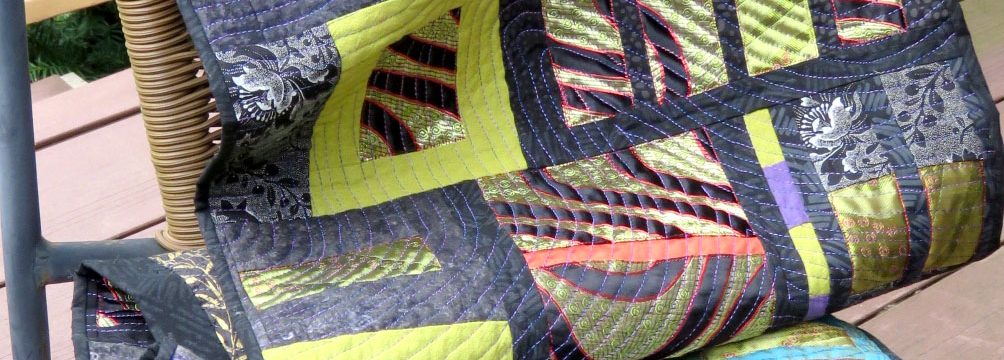The Table Runner Project
Core Member Karen Albanese Campbell is exhibiting her art quilt collection known as the “Table Runner Project” and new prints at the Dairy Barn Arts Center in Athens, Ohio through March 16, 2025. These art quilts were made by combining textiles from found garments with textiles from her personal stash. This work was inspired by the Japanese genre of screen painting known as “Tagasode” which translates to “Whose sleeves?”
“The fragrance seems even more alluring than the hue,
Whose sleeves have brushed past?
Or would it be this plum tree blossoming here at home?”
Opening Reception:
Friday, January 17
from 6:00 pm – 8:00pm
The Dairy Barn Art Center (@dairybarnarts)
Chaddock & Morrow Gallery (adjacent to the main gallery)
8000 Dairy Barn Lane, Athens, OH 45701
Note: Karen’s reception happens at the same time “Women of Appalachia Project” which is in the Main Dairy Barn Gallery.
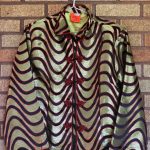 “Browsing through a local thrift store, I came across an unusual silk jacket that had the style of a short kimono. The silk brocade had a swirling wave pattern in green, black, red and gold. So beautiful and the price was right at $5.99!
“Browsing through a local thrift store, I came across an unusual silk jacket that had the style of a short kimono. The silk brocade had a swirling wave pattern in green, black, red and gold. So beautiful and the price was right at $5.99!
That silk jacket was the first in my collection of embroidered caftans, linen tunics with metallic threads and beads, batiks and hand printed cottons, silk saris and other clothing items. Everything I have collected has three things in common: they had originated in a culture other than my own; they leaned toward being traditional in design or use; and they exhibited superior textile design and finish details.
While I continued to wonder what I might do with my collection of clothing, I came across an intriguing Japanese painted screen while visiting The Metropolitan Museum of Art in New York City. That painted screen, dating to the 17th century and inspired by a classical love poem known as “Tagasode” (translated as “Whose Sleeves?”) was simply an image of beautiful clothing hanging over a wooden rack. This romantic poem, and these painted screens, refers to a woman, now absent, whose beautiful robes evoke memories of their owner, inviting the viewer to speculate on her identity.
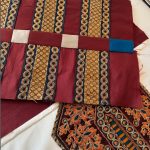
Discovering this genre of Japanese art felt like my own experience of discovering beautiful clothing from India, Africa, China and Nepal hanging on racks in thrift stores. My fingers would examine the beads and embroidery. I reveled in the color combinations. I wondered about the workshop infrastructure of skilled artisans: designers, makers, weavers, embroiderers, printers, and seamstresses.
Mostly, I found myself wondering about the owner of each garment. I wondered why she had discarded that item; did it belong to her or her grandparents? Was it brought to America as a treasured memento of her home? Did she leave her home by choice or had she been displaced by war, famine and other drastic circumstances?
I embarked on this project with a desire to create art that is a tangible expression of my values of “loving my neighbor” and “showing hospitality to strangers.” Each quilt combines the textiles from one item of clothing with materials from my own fabric stash. Each quilt represents the person who owned that piece and our friendship. The act of handling the garment, cutting it apart, and designing a new work of art celebrates and honors the beauty of that person and their culture. Making these quilts is an act of hospitality, an invitation to intertwine our lives. These quilts are my version of “tagasode” and I am asking “Whose sleeves? Who owned this? Where is she?” Even though I will never know who owned this clothing, each quilts is made up of pieces of both of our lives. They are coverings for kitchen tables where we will sit together and tell each other our stories.”
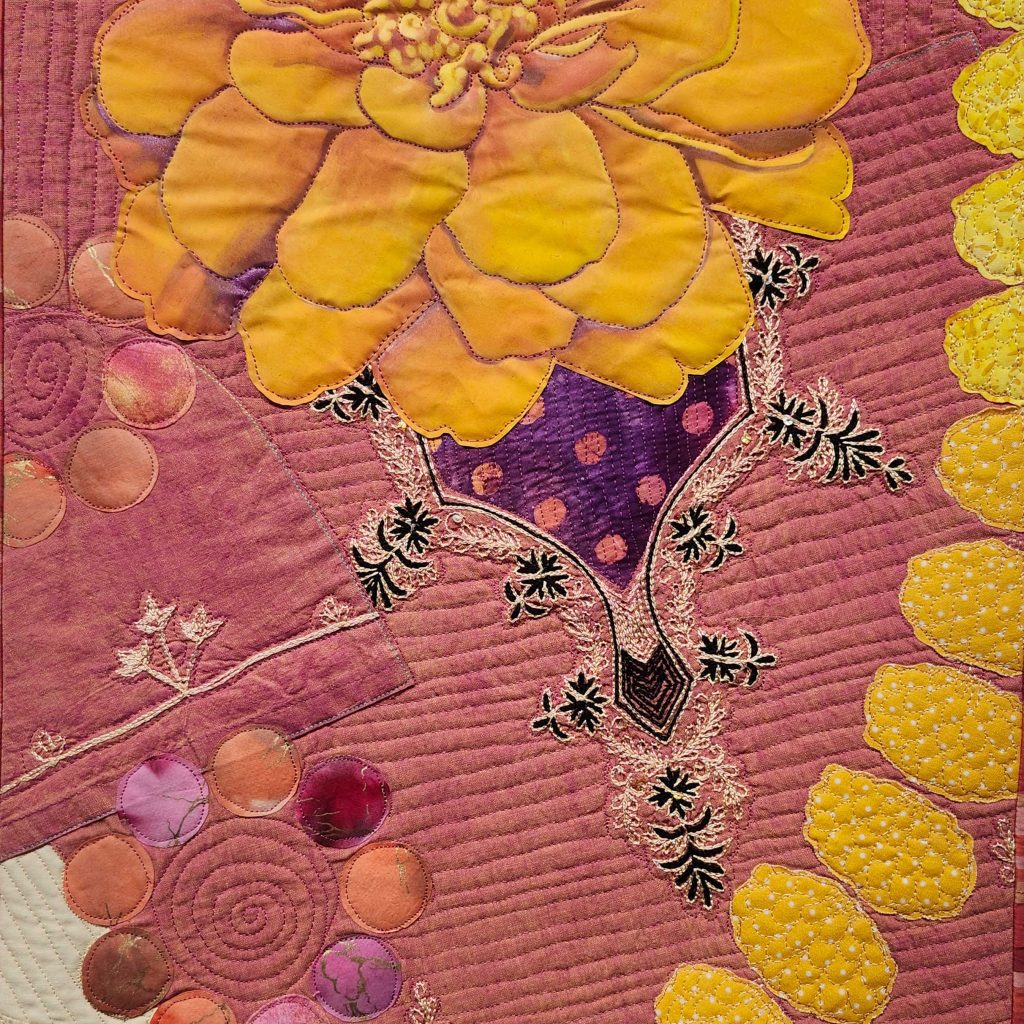
Detail of “Garlands of Marigolds to Celebrate Her Marriage” by Karen Albanese Campbell
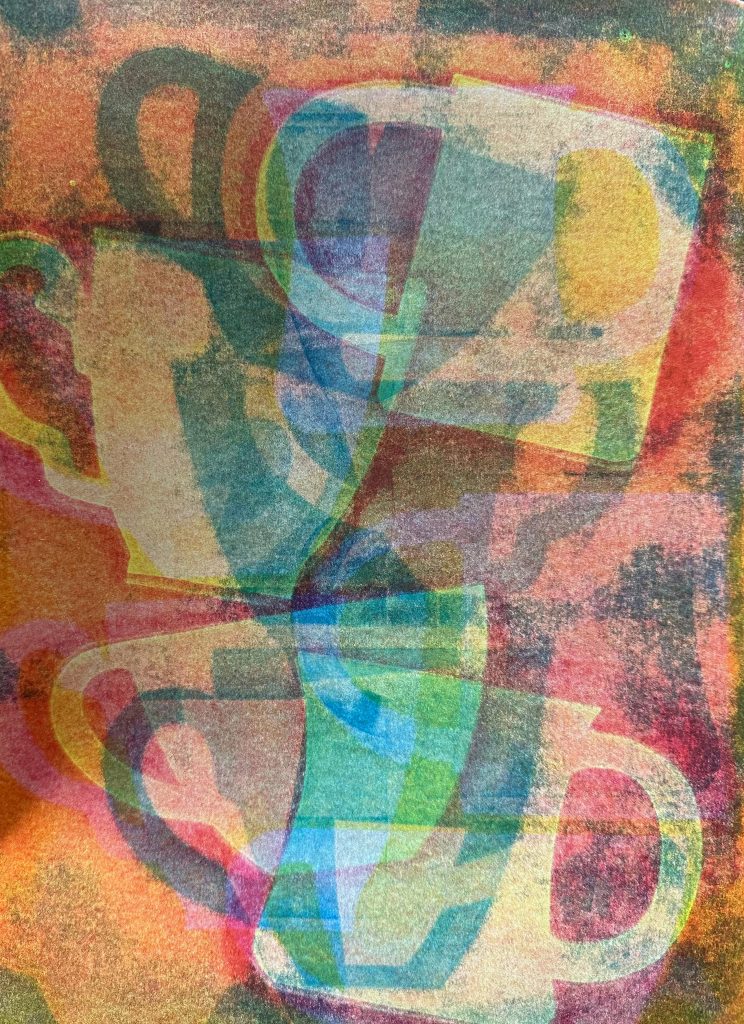
A new series of prints by Karen are also included in this exhibit.
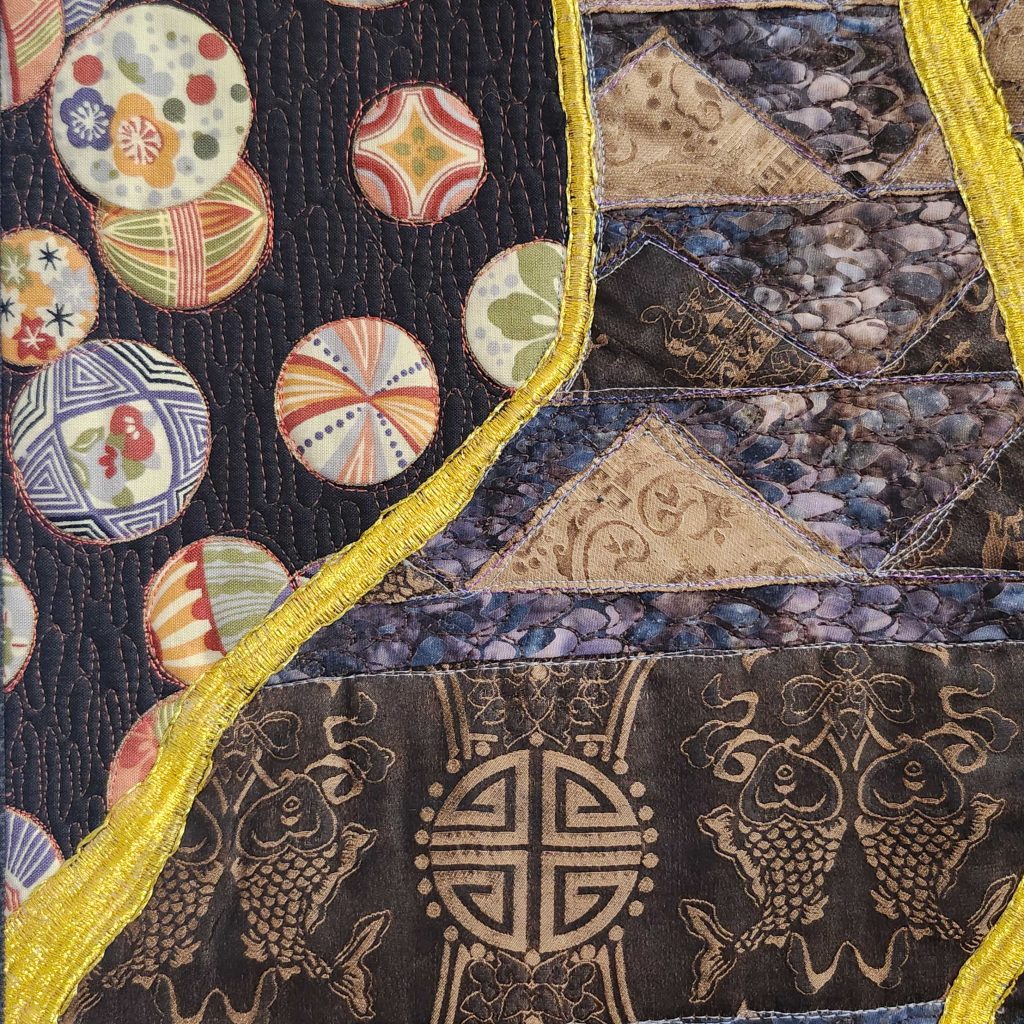
Detail of “Are We Connected By What We Love or What We Have Lost?” by Karen Albanese Campbell

